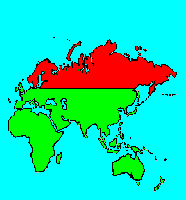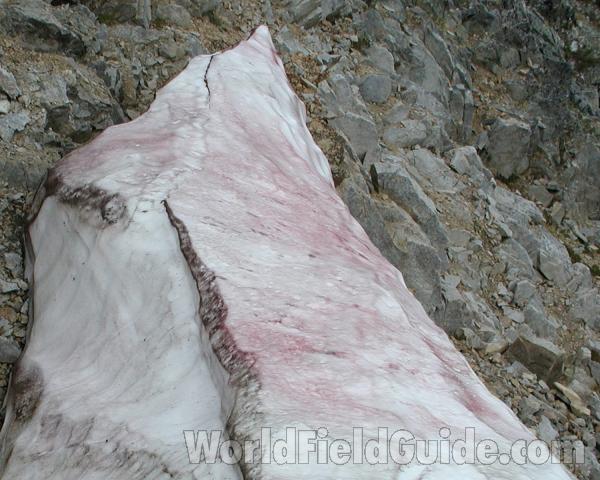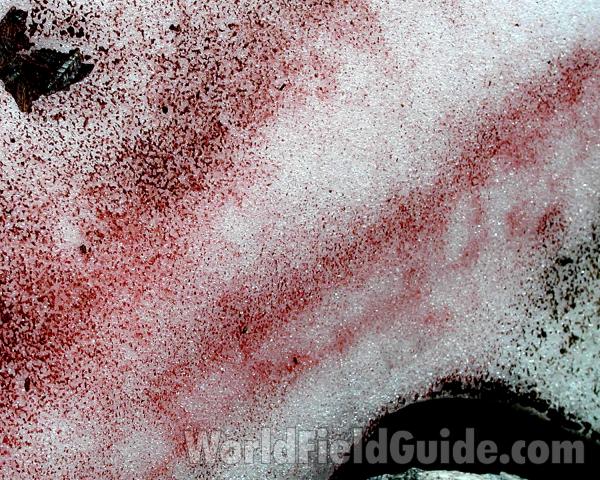SPECIES INFO
Red snow or watermelon snow (Chlamydomonas nivalis) is found at high altitudes in mountains, especially those of California, Oregon, and Washington. It is very common in the Sierra Nevada Mountains of California above 10,000 feet during the summer months. The reddish snow is caused by an algae that lives in the top 10 inches of snow banks.Green Algae Group (Chlorophyta) is usually broken into three main categories: Charophyceae, typical Chlorophyceae, and Euglenophyceae. The Euglenophyceae can also be placed as a separate group in that they contain animal-like features. They are placed here in a separate class as opposed to making them one of the three subgroups of green algae.
Protista kingdom (sometimes spelled as Protoctista) contains numerous phyla including unicellular animals and algae. Generally, these are aquatic life forms. The number of species is difficult to estimate, and it might be as low as 60,000 and as high as 200,000.
There is discussion among scientists as to whether this group of lifeforms should be split into two different kingdoms. One for those that make their own food, and the other for those that eat food. They suggest: Chromista and Protozoa.
Although herein we follow conventional norms and recognize 9 phyla, it has been suggested there might be 50 different phyla herein. These lifeforms have been found as far back as 1.2 billion years ago.




